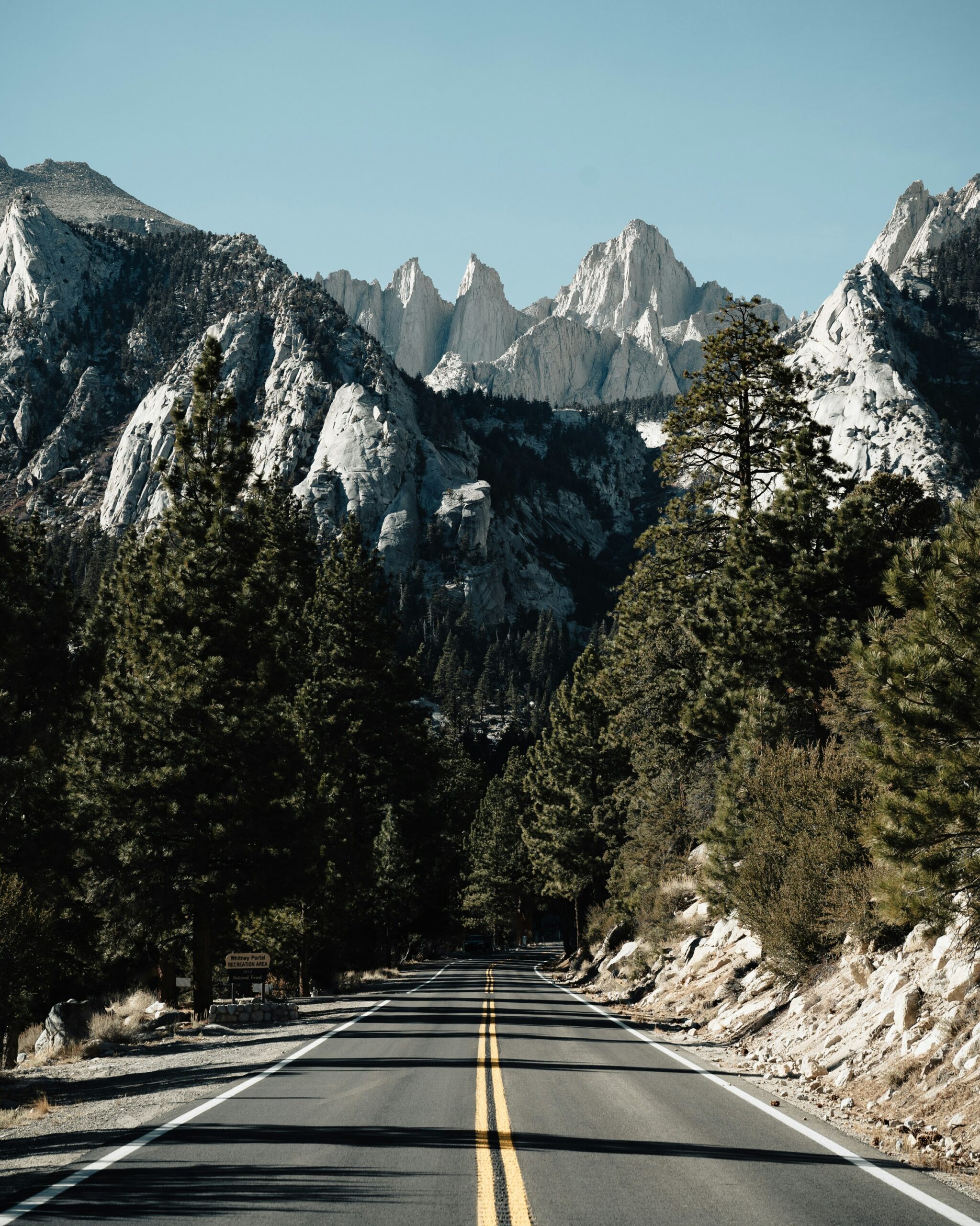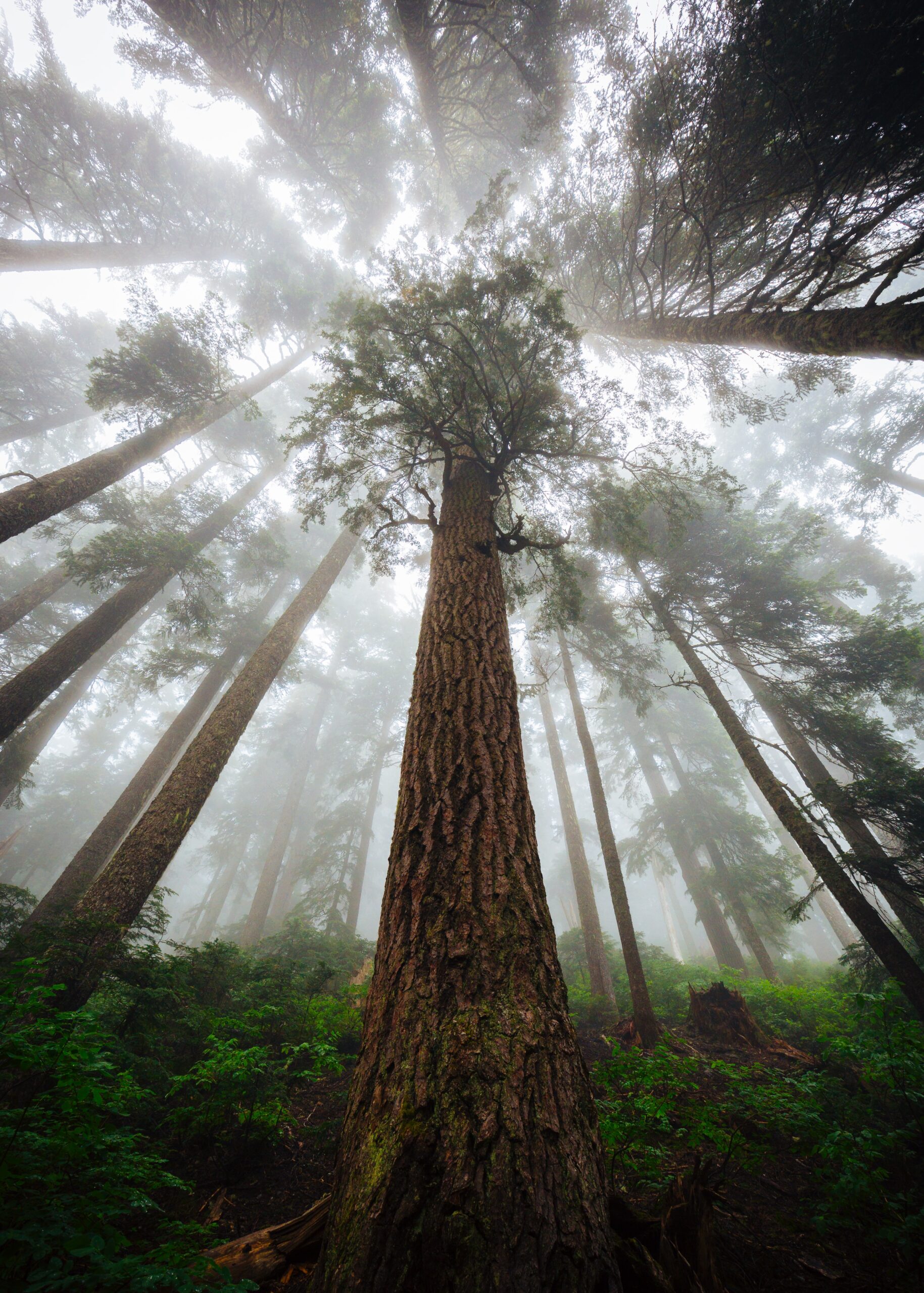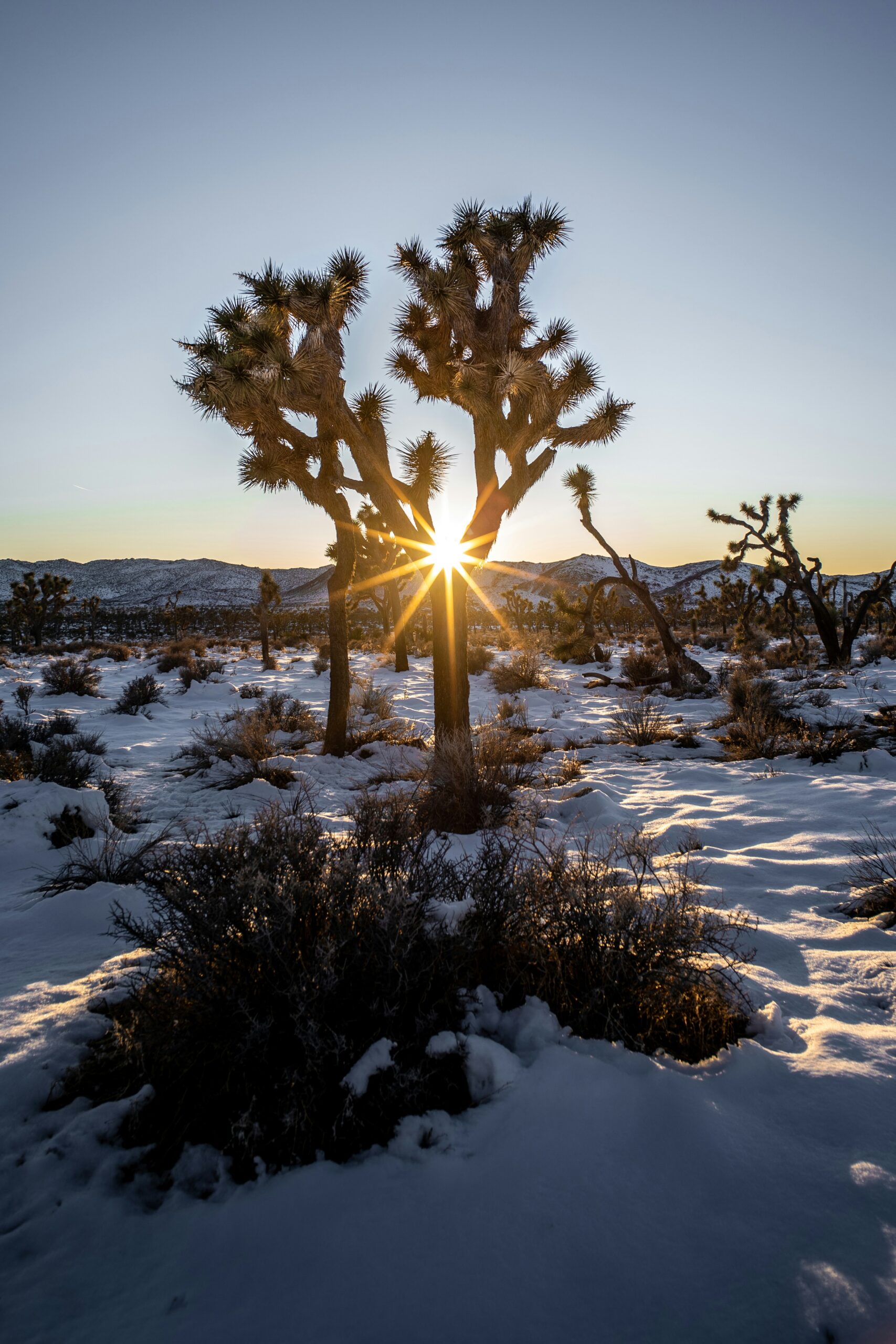Tallest Mountains in California: Peaks That Touch the Sky
California's majestic peaks beckon adventurers and nature lovers alike. You might be surprised to learn that the Golden State boasts some of the most impressive mountains in the contiguous United States. One of the tallest mountains in California is Mount Whitney, standing proudly at 14,505 feet (4,421 meters) above sea level.
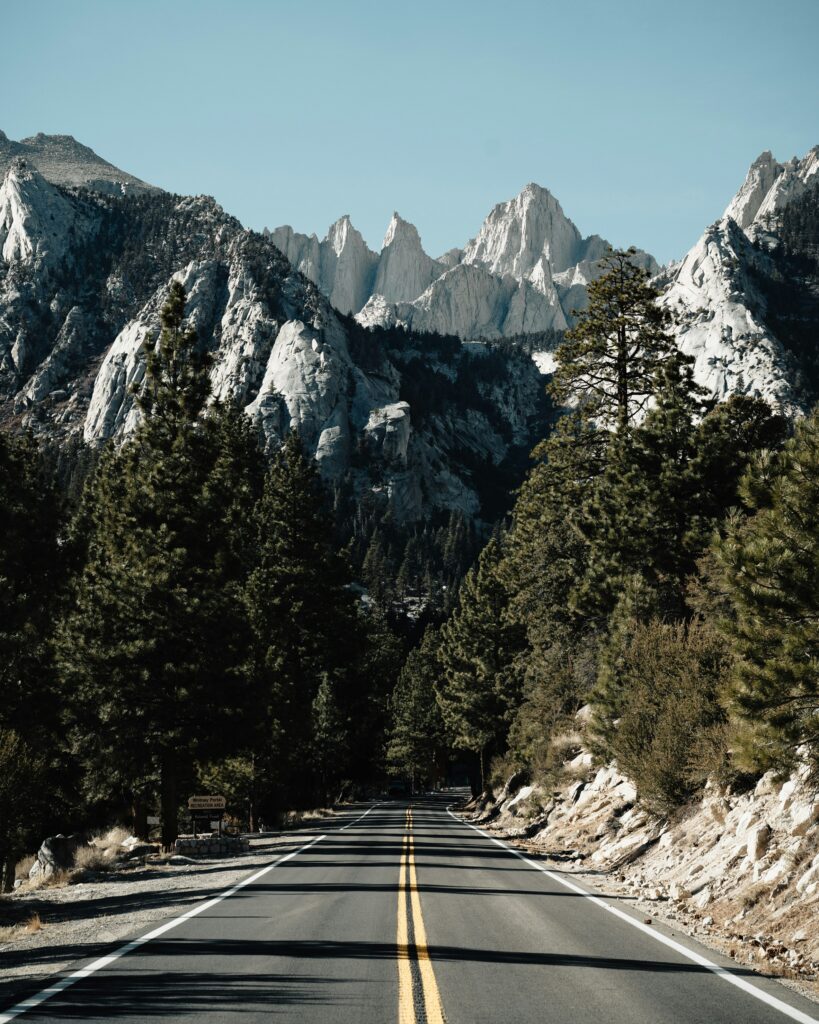
The Sierra Nevada range dominates California's skyline, home to numerous towering peaks. You'll find most of the tallest mountains in California here, including the famous Mount Whitney. This range offers breathtaking views and challenging climbs for hikers and mountaineers.
While the Sierra Nevada claims the spotlight, don't overlook the Cascade Range in northern California. Mount Shasta, an impressive volcano, rises to 14,179 feet (4,322 meters). Whether you're an experienced climber or simply appreciate stunning vistas, these tallest mountains in California promise unforgettable experiences and awe-inspiring natural beauty.
Tallest Mountains in California: Peaks That Touch the Sky
Geographical Overview of California's Mountain Ranges
California's diverse landscape features several impressive mountain ranges that shape the state's geography. You'll find these ranges stretching across different regions, each with its unique characteristics.
The Sierra Nevada is perhaps the most famous mountain range in California. It runs 400 miles along the eastern edge of the state, boasting granite peaks and alpine scenery. Here, you'll discover Mount Whitney, the tallest mountain in the contiguous United States.
In northeastern California, you'll encounter the Cascade Range. This volcanic mountain chain extends from British Columbia to Northern California, adding to the state's geological diversity.
The White Mountains, located east of the Sierra Nevada, offer a stark contrast to their neighbors. You'll notice these mountains are drier and less vegetated, creating a unique desert-like environment.
Here's a quick overview of California's major mountain ranges:
| Range | Location | Notable Features |
|---|---|---|
| Sierra Nevada | Eastern California | Mount Whitney, granite formations |
| Cascade Range | Northeastern California | Volcanic peaks, Lassen Peak |
| White Mountains | East of Sierra Nevada | Ancient bristlecone pine forests |
As you explore California, you'll find these mountain ranges play a crucial role in shaping the state's climate, ecosystems, and even its cultural identity.
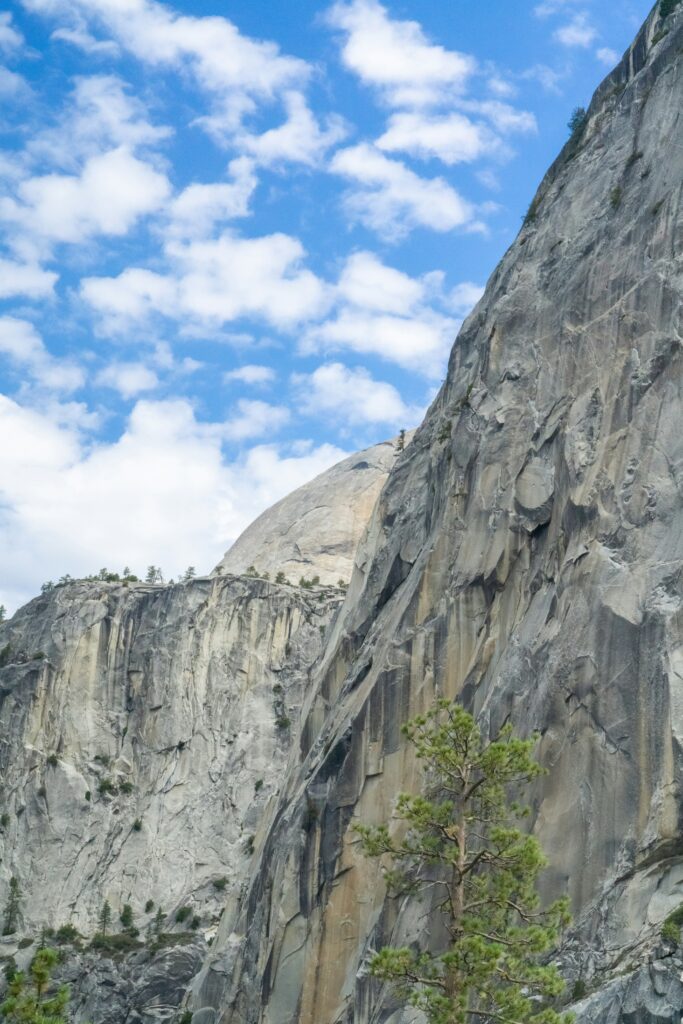
Elevations and Prominence: Understanding Mountain Metrics
When you're exploring California's mountains, it's helpful to understand how they're measured. Elevation and prominence are two key metrics that give you insight into a peak's stature.
Elevation refers to a mountain's height above sea level. In California, Mount Whitney stands tallest at 14,505 feet, making it the highest peak in the contiguous United States.
Prominence is a bit trickier to grasp. It measures how much a mountain stands out from surrounding terrain. Think of it as the height of the peak relative to the lowest contour line encircling it and no higher peak.
Here's a quick comparison of some notable California peaks:
| Mountain | Elevation (ft) | Prominence (ft) |
|---|---|---|
| Mount Whitney | 14,505 | 10,080 |
| Mount Shasta | 14,179 | 9,822 |
| Mount Diablo | 3,849 | 3,109 |
You might also come across the term “isolation” when researching mountains. This measures the distance to the nearest point of equal elevation. It helps you understand how “alone” a peak is in the landscape.
Remember, these metrics work together to give you a full picture of a mountain's significance. While elevation tells you absolute height, prominence and isolation reveal how a peak stands out in its environment.
Exploring the Sierra Nevada
The Sierra Nevada mountains offer breathtaking adventures for hikers and nature enthusiasts. You'll find awe-inspiring peaks, pristine alpine lakes, and diverse ecosystems as you explore this magnificent range.
Majestic Mount Whitney
Mount Whitney stands tall as the highest point in the contiguous United States, reaching an impressive elevation of 14,505 feet. As you plan your ascent, be prepared for a challenging but rewarding experience.
The most popular route to the summit is the Mount Whitney Trail, a 22-mile round trip. You'll need to secure a permit in advance, as this trail is in high demand. Start early to avoid afternoon thunderstorms and bring plenty of water.
Along the way, you'll encounter stunning views of the surrounding Sierra Nevada landscape. Keep an eye out for marmots and other wildlife that call this area home. The thin air at high altitudes can be challenging, so take your time and acclimatize properly.
The Magnificent Mount Williamson
Mount Williamson, the second-highest peak in the Sierra Nevada, offers a more secluded adventure. Standing at 14,379 feet, it's a formidable challenge for experienced climbers and hikers.
The most common route is the West Face, a strenuous 12-mile round trip. You'll need to navigate through rugged terrain and boulder fields. The journey is worth it for the panoramic views of the Owens Valley and surrounding peaks.
Be prepared for rapidly changing weather conditions. Pack appropriate gear and check forecasts before setting out. The solitude and raw beauty of Mount Williamson make it a favorite among those seeking a true wilderness experience.
The Impressive Mount Tom
Mount Tom, while not as tall as its neighbors, offers unique charm and accessibility. At 13,652 feet, it provides spectacular views of the Eastern Sierra without the extreme challenges of higher peaks.
The standard route is a 10-mile round trip hike from Horton Lakes. You'll traverse through pine forests before reaching the rocky upper slopes. The summit rewards you with views of Mount Whitney and the Owens Valley.
Spring wildflowers add vibrant colors to the landscape. Bring a camera to capture the beauty of alpine meadows and crystal-clear mountain lakes. Mount Tom is an excellent choice for those looking to experience the Sierra Nevada's grandeur without extreme technical climbing.
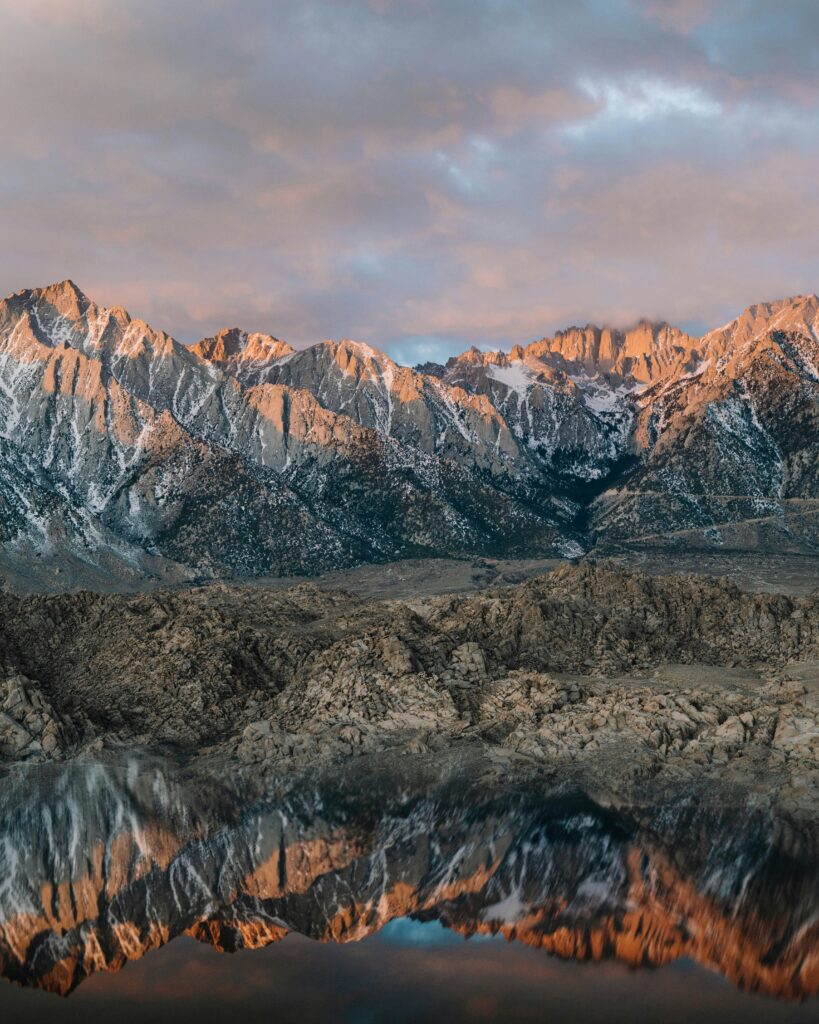
Peaks of the White Mountains
The White Mountains of California boast impressive peaks that rival their Sierra Nevada neighbors. You'll find rugged terrain and unique ecosystems in this lesser-known mountain range.
White Mountain Peak's Unique Ecosystem
At 14,252 feet, White Mountain Peak stands as the third-highest summit in California. You'll be amazed by its striking appearance, with dark orange scree contrasting against the name “White Mountain.”
The peak's ecosystem is truly one-of-a-kind. As you climb, you'll notice the landscape change dramatically. The lower slopes feature pinyon-juniper woodlands, while the upper reaches are home to hardy alpine plants.
Did you know that White Mountain Peak is actually an extinct volcano? It rises about 1,600 feet above the surrounding plateau. The summit is composed of Mesozoic metavolcanic rock – lava that was lifted and melted by rising granite.
From the top, you'll enjoy breathtaking views of the Owens Valley to the west and the vast Great Basin to the east. On a clear day, you might even spot Mount Whitney in the distance!
The Cascade Range and Mount Shasta
The Cascade Range stretches from British Columbia to Northern California, with Mount Shasta standing as a prominent landmark. You'll find this majestic volcano dominating the landscape and captivating your imagination.
Mount Shasta: Guardian of the Cascades
At 14,179 feet (4,322 meters) tall, Mount Shasta is the second-highest peak in the Cascade Range. You can spot this impressive double-peaked dormant volcano from miles away. Its towering presence dominates the surrounding area, offering breathtaking views for a hundred miles in every direction.
Mount Shasta is more than just a pretty sight. It's a potentially active volcano with an estimated volume of 85 cubic miles. You'll find it located about 65 km (40 mi) south of the Oregon-California border, making it easily accessible for your next adventure.
When you visit, you'll be stepping onto a National Landmark, designated in 1976. The mountain offers numerous recreational activities, from hiking and climbing to skiing and photography. You'll be amazed by its beauty in every season.
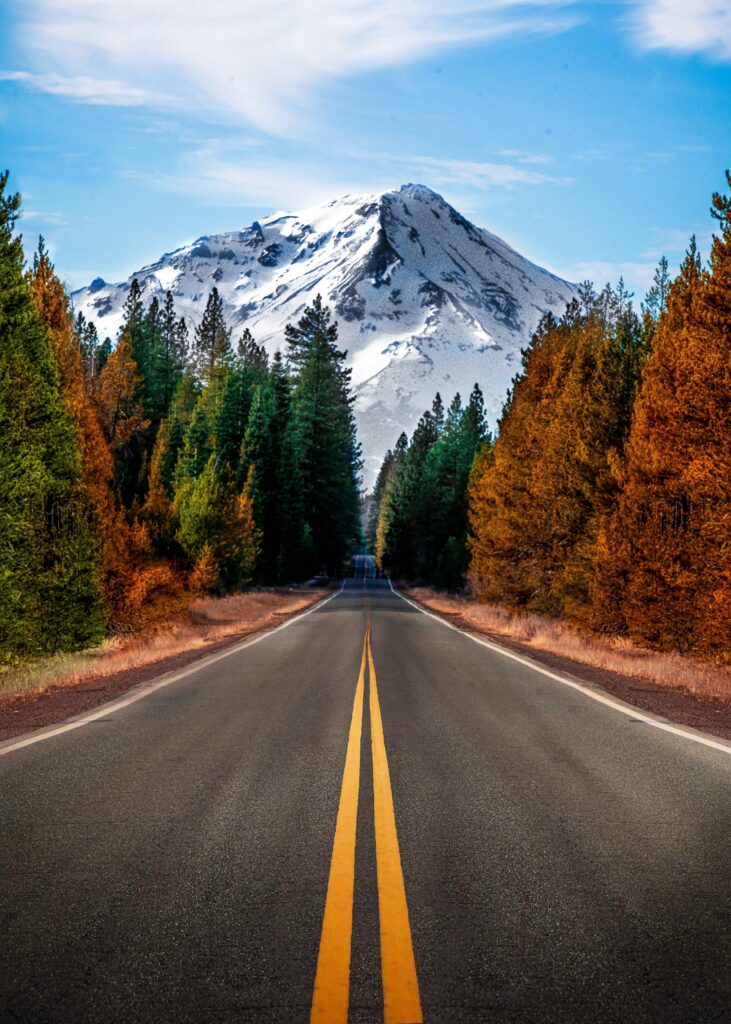
Significant Peaks of the Sierra Nevada
The Sierra Nevada boasts several remarkable peaks that offer unique geological features and captivating attractions. You'll find these, some of the tallest mountains in California, to be both awe-inspiring and scientifically intriguing.
Mount Darwin's Geological Features
Mount Darwin, standing at 13,831 feet, is a geological wonder you won't want to miss. Its granite composition tells a fascinating story of the Sierra Nevada's formation.
As you explore, you'll notice the distinctive U-shaped valleys carved by ancient glaciers. These valleys provide clear evidence of the area's glacial history.
The mountain's exposed rock faces offer you a glimpse into millions of years of geological processes. You can spot intricate patterns of fractures and joints in the granite, created by tectonic forces and weathering.
Don't forget to look for the unique rock formations called tafoni. These honeycomb-like structures on the granite surface are a result of salt weathering and create an otherworldly appearance.
The Wonders of Mount Kaweah
Mount Kaweah, with its impressive elevation of 13,802 feet, is a treasure trove of natural wonders. You'll be amazed by its diverse ecosystem as you ascend through different climate zones.
At lower elevations, you'll encounter lush forests teeming with wildlife. Keep an eye out for mule deer, black bears, and a variety of bird species.
As you climb higher, the landscape transforms into alpine meadows bursting with colorful wildflowers during the summer months. The sight is truly breathtaking!
Near the summit, you'll find yourself in a rugged, rocky terrain. The panoramic views from the top are unparalleled, offering you a stunning 360-degree vista of the Sierra Nevada.
Don't miss the chance to explore the nearby Big Arroyo, a picturesque glacial valley that showcases the mountain's geological history.
Mount Morgan's Attraction
Mount Morgan, reaching 13,748 feet, is a magnet for outdoor enthusiasts and geology buffs alike. You'll find its rugged beauty and challenging terrain irresistible.
The mountain's unique shape, with its sharp ridges and steep faces, is a result of glacial erosion. As you hike, you'll notice the striking contrast between the smoothed lower slopes and the jagged upper reaches.
For rock climbing enthusiasts, Mount Morgan offers some of the best granite climbing in the Sierra Nevada. You'll find routes suitable for various skill levels.
Don't overlook the mountain's rich mining history. You can still spot remnants of old mining operations, providing a fascinating glimpse into California's gold rush era.
The nearby Rock Creek Lake offers a perfect spot for you to relax and reflect on your mountain adventures. Its crystal-clear waters mirror the surrounding peaks, creating a postcard-perfect scene.
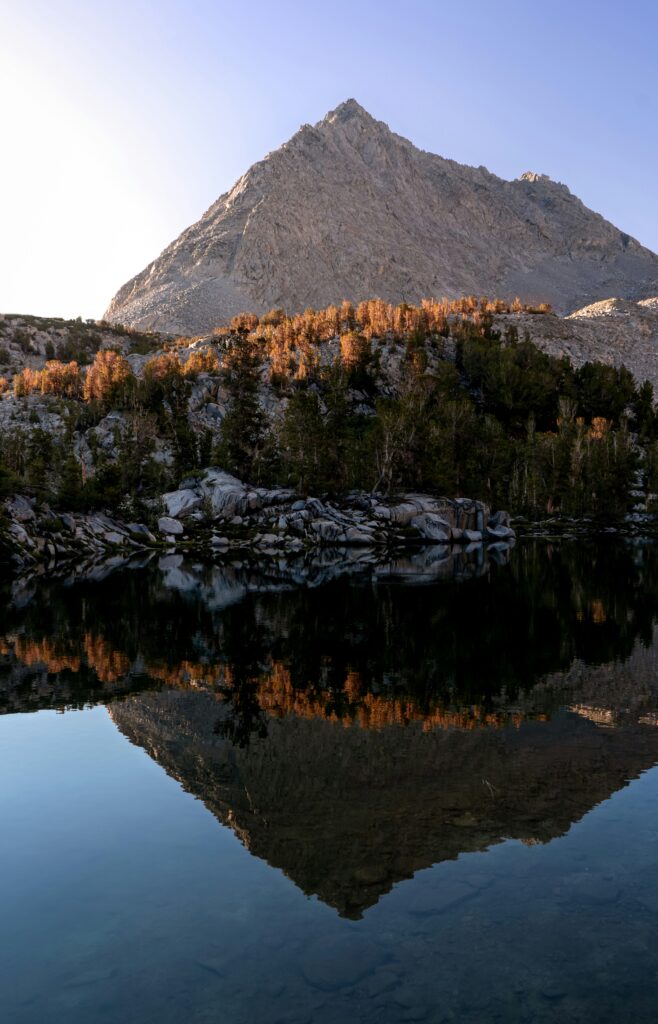
Isolated Giants: Peaks with Distinct Prominence
California's mountain landscape, these tallest mountains in California, features several peaks that stand out due to their isolation and prominence. These solitary giants offer unique challenges and breathtaking views for climbers and hikers alike.
Mount Humphreys' Isolation Factor
Mount Humphreys, standing at 13,986 feet, is one of California's most isolated peaks. You'll find this impressive mountain in the eastern Sierra Nevada range. Its isolation factor is remarkable, with the nearest higher peak located over 100 miles away.
When you climb Mount Humphreys, you'll experience a sense of solitude unlike any other in the region. The mountain's prominence makes it visible from great distances, serving as a landmark for miles around.
The trek to its summit is challenging, requiring technical climbing skills. You'll need to navigate steep, rocky terrain and plan carefully for changing weather conditions.
Mount Keith's Splendid Isolation
Mount Keith, reaching 13,977 feet, is another of California's isolated giants. You'll discover this peak in the southern Sierra Nevada, offering spectacular views of the surrounding wilderness.
The mountain's prominence is striking, with over 2,000 feet of topographic isolation. As you approach Mount Keith, you'll be impressed by its distinct profile against the sky.
Climbing Mount Keith presents a mix of challenges. You'll encounter class 3 scrambling on your way to the summit. The route is less technical than Mount Humphreys but still demands careful navigation and good physical conditioning.
The Prominence of Mount Gabb
At 13,741 feet, Mount Gabb is a lesser-known but equally impressive isolated peak. You'll find this mountain in the John Muir Wilderness, part of the Sierra Nevada range.
Mount Gabb's prominence is notable, with over 1,500 feet of topographic isolation. As you hike towards it, you'll be struck by its commanding presence in the landscape.
The climb to Mount Gabb's summit is less technical than some of its neighbors. You'll enjoy a challenging but approachable ascent, with stunning views of the surrounding peaks and valleys as your reward.
Other Noteworthy Mountains
California's mountain landscape offers more than just the highest peaks. Two lesser-known but equally impressive mountains deserve your attention for their unique characteristics and hiking opportunities.
Mount Pinchot's Standing
Mount Pinchot stands tall at 13,495 feet, making it a formidable peak in the Sierra Nevada. You'll find it nestled in Kings Canyon National Park, offering breathtaking views of the surrounding wilderness. The mountain is named after Gifford Pinchot, the first chief of the U.S. Forest Service.
When you plan your ascent, be prepared for a challenging hike. The route to the summit involves steep terrain and rocky paths. You'll need good physical fitness and proper gear. The reward? Spectacular panoramas of the High Sierra and a sense of accomplishment.
Exploring Mount Dubois
Mount Dubois, reaching 13,559 feet, is a hidden gem in the White Mountains. You'll discover it's less crowded than many Sierra peaks, offering a more solitary experience. The mountain's unique location provides views of both California and Nevada.
Your journey to Mount Dubois will take you through diverse ecosystems. You'll pass ancient bristlecone pine forests, some of the oldest living organisms on Earth. The climb is strenuous but doable for experienced hikers. Don't forget to bring plenty of water and sun protection – the high altitude and exposed terrain can be unforgiving.
Popular Climbing Destinations
These tallest mountains in California offer some incredible mountain climbing experiences for adventurous souls. You'll find challenges and breathtaking views at these high-altitude destinations that attract climbers from around the world.
Challenges of Mount Langley
Mount Langley stands as a formidable challenge for climbers. At 14,026 feet, it's the southernmost fourteener in California. You'll face a long approach hike through beautiful alpine terrain.
The standard route involves Class 1 and 2 hiking with some Class 3 scrambling near the summit. Be prepared for steep scree slopes and potential snow fields, even in summer.
Navigation can be tricky, so bring a map and compass. Start early to avoid afternoon thunderstorms. The views from the top are spectacular, encompassing the Sierra Nevada range and Owens Valley below.
Scaling Middle Palisade
Middle Palisade offers a thrilling climb in the heart of the Palisades. At 14,019 feet, it's slightly lower than its neighbors but no less challenging. You'll need solid rock climbing skills for this one.
The approach involves a strenuous hike up Finger Lake. From there, you'll tackle the Northeast Face route, rated Class 3-4. Expect exposed scrambling and some technical climbing.
Key gear:
- Climbing helmet
- Harness and rope
- Climbing shoes
- Plenty of water
The final push to the summit involves navigating a maze of granite blocks. Your reward? Jaw-dropping views of the surrounding peaks and glaciers.
Mount Lyell's Climbing Routes
Mount Lyell, Yosemite's highest peak at 13,114 feet, offers diverse climbing options. The most popular route is via the Lyell Glacier, though it's receding rapidly due to climate change.
You'll start from Tuolumne Meadows, hiking through stunning alpine scenery. The glacier climb requires ice axes and crampons, along with glacier travel knowledge. Be aware of crevasse dangers.
For a non-glacial option, consider the Southeast Ridge:
- Class 3 scrambling
- Some exposure
- Fantastic views of the Yosemite high country
Whichever route you choose, an early start is crucial to avoid afternoon storms and soft snow conditions.
Ecological Significance of California's Peaks
Our list of the tallest mountains in California harbor unique ecosystems and diverse habitats. These peaks play a crucial role in preserving biodiversity and supporting rare plant and animal species adapted to high-altitude environments.
Mount Dana's Diverse Habitats
Mount Dana, standing at 13,061 feet, boasts a remarkable range of ecosystems. As you ascend, you'll encounter distinct vegetation zones that change with elevation. The lower slopes feature hardy pine forests, while the upper reaches are home to delicate alpine meadows.
You'll find specialized plants like the Mount Dana draba, a rare wildflower that thrives in rocky crevices. This mountain also provides a sanctuary for unique wildlife. Marmots and pikas scurry among the rocks, while golden eagles soar overhead.
The mountain's snowmelt feeds pristine streams, supporting aquatic life and downstream ecosystems. Your visit to Mount Dana offers a glimpse into nature's resilience in extreme conditions.
Preserving Mount Conness
Mount Conness, reaching 12,649 feet, is a testament to successful conservation efforts. You'll find this peak straddling the boundary of Yosemite National Park, ensuring its protection for future generations.
The mountain's granite slopes host a variety of hardy plant species adapted to thin soils and harsh weather. As you explore, you might spot the Mount Conness buckwheat, a rare plant found only in this region.
Mount Conness serves as a critical water source, with its glaciers and snowfields feeding alpine lakes and streams. These waters support a delicate ecosystem, including the threatened Yosemite toad.
Your awareness of this fragile environment helps preserve its beauty and ecological importance.
Red Slate Mountain's Ecology
Red Slate Mountain, at 13,163 feet, offers a unique ecological landscape. Its distinctive reddish hue comes from iron-rich metamorphic rock, creating specialized habitats for flora and fauna.
As you explore, you'll encounter hardy plants like the sky pilot, with its vibrant blue flowers adapted to high-altitude conditions. The mountain's talus slopes provide shelter for pika colonies, small mammals that are indicators of climate change impacts.
Red Slate Mountain plays a vital role in the local watershed, with its snowmelt feeding nearby lakes and streams. These water bodies support diverse aquatic life and contribute to the overall health of the ecosystem.
Your visit to Red Slate Mountain allows you to witness the intricate balance of life in these extreme environments.

Historical and Cultural Context
The tallest mountains in California have a rich history intertwined with daring explorers and meaningful names. These peaks have witnessed remarkable feats and carry stories that reflect the state's diverse heritage.
Mountaineers who Shaped History
Charles Begole, John Lucas, and Albert Johnson made history as the first recorded climbers to reach Mount Whitney's summit on August 18, 1873. Their achievement opened the door for future mountaineers to explore California's highest peak.
You might be surprised to learn that many early climbers were fishermen and miners seeking new opportunities. These adventurers often stumbled upon breathtaking vistas and challenging climbs, inadvertently becoming pioneers in mountaineering.
John Muir, a renowned naturalist, played a crucial role in popularizing the Sierra Nevada. His passionate writings and advocacy efforts helped establish Yosemite National Park, preserving these majestic peaks for future generations to enjoy.
Naming of Peaks: Legacies and Stories
The names of California's highest mountains often reflect the state's diverse cultural heritage. You'll find peaks named after Native American tribes, Spanish explorers, and American settlers.
Mount Whitney, for instance, was named after Josiah Whitney, the State Geologist of California in the 1860s. However, the mountain was known to indigenous peoples as “Tumanguya,” meaning “guardian spirit” in Northern Paiute or Shoshone.
Needham Mountain, another notable peak, got its name from local history. It honors Paul Needham, a respected resident of the nearby town of Springville in the late 19th century.
Many mountain names tell stories of early explorers, local legends, and significant events. As you climb these peaks, you're not just conquering heights but also connecting with the rich tapestry of California's past.

